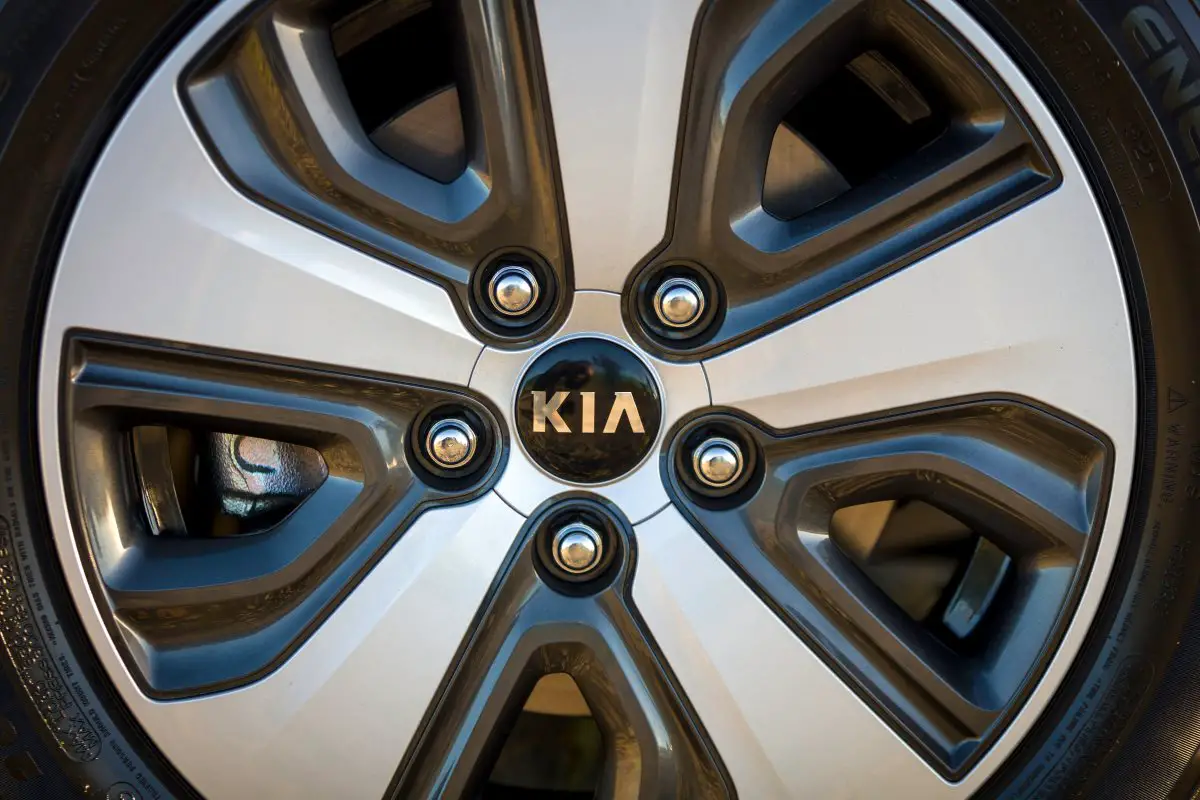The KIA e-Niro, otherwise known as the KIA Niro EV in the States, comes with direct TPMS. This means you can check tire pressures from the LCD display in front of you.
Tire maintenance is a vital part of driving, made one step easier with features such as these. Also, you’ll find your recommended tire pressures in the owner’s manual and the driver’s door sill.
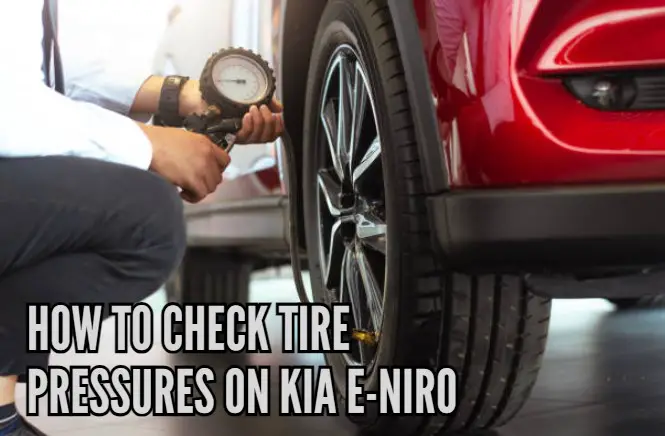
This page will walk you through checking KIA e-Niro tire pressures and explain why the TPMS function is so important. Read your owner’s manual before adjusting the air pressures in your tires!
Table of Contents
Check the KIA e-Niro tire pressure from the driver’s seat
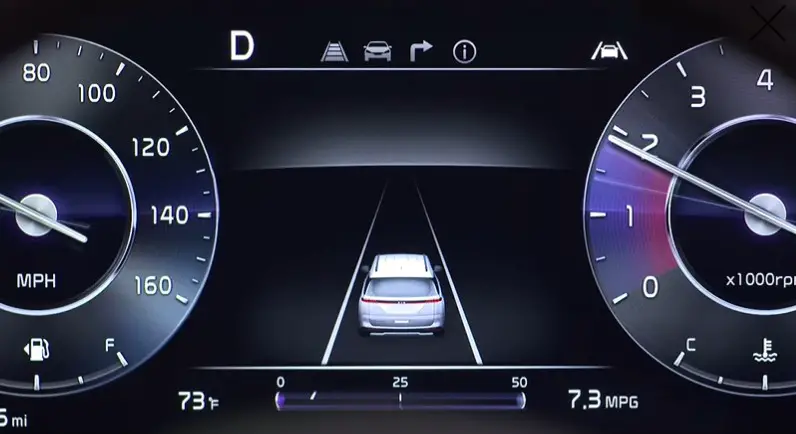
You can check the pressure in your e-Niro tires from the dashboard (LCD) display.
Follow the instructions below:
- Navigate to the TPMS screen using the buttons on the steering wheel.
- This shows a live reading of all your tire pressures.
- You might see ‘Drive to display‘.
- In this case, drive the car for a couple of minutes. The readings will then pop up.
- Driving the e-Niro calibrates the sensors.
How to change the tire pressure unit on the KIA e-Niro
You can read the measured tire pressures in psi, bar, or kPa. Here’s how to alter that.
- Open the User settings mode on your LCD dashboard display.
- Navigate down to Other features.
- Find Tire Pressure Unit and select your desired measurement unit.
How to check KIA e-Niro tire pressures with a gauge
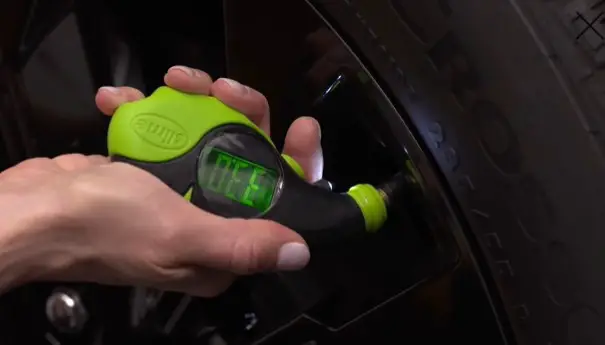
Using a tire pressure gauge to check the psi levels of your tires might feel old-fashioned. However, it’s just as effective.
- Ensure the tires are cold.
- Wait a little while after driving.
- With your tire pressure gauge in hand, unscrew the cap on the tire valve.
- Press the tire pressure onto the exposed valve.
- Don’t panic when you hear the rush of air coming out. All things considered, it’s an insignificant amount.
- You’ll need to screw on the attaching sleeve on some models and inflators.
- Pull the gauge away from the valve immediately.
- The rush of air should stop.
- Read the tire pressures (in psi, kPa or bar) on the indicator.
Check these pressures against the recommended levels. You’ll find these in your owner’s manual or the driver’s door sill.
If necessary, top your tires up using an in-car or gas station inflator. Don’t forget to screw the valve cap back on.
What is the TPMS light on the KIA e-Niro?
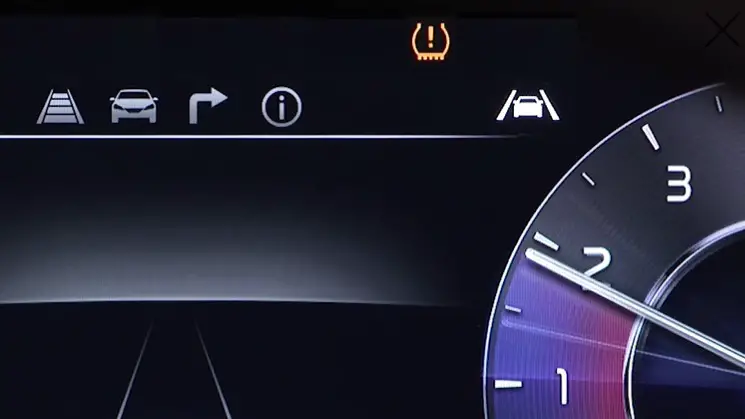
TPMS is found on most modern cars. It stands for Tire Pressure Monitoring System, and it does just that. The KIA e-Niro uses direct TPMS. It has metal valves attached to sensors (rather than the usual rubber type).
These sensors measure – live – the air pressure within each individual tire. They’re programmed to connect to the ECU and display the e-Niro’s tire pressures for you to see.
Under normal operating circumstances, the TPMS malfunction light should be off.
- The TPMS light is an exclamation mark (!) within a bulging tire.
- Some describe it as looking like a horseshoe.
If you can see the TPMS warning light, you have low pressure in at least one tire.
- On the KIA e-Niro, you’ll also see a ‘Low Tire Pressure‘ display message.
This could be due to any of the following:
- Puncture
- Cracking
- A deep gash or tear
- A leak at the tire bead
- Valve leak
- Dangerous tire wear causing leaks
- Sensor problem
Alternatively, the TPMS system may have malfunctioned. You’ll need to go to a KIA dealer or KIA-trained mechanic.
What should I do if my KIA e-Niro tire has low pressure?
If the TPMS light comes on and you notice severely low tire pressures, go straight to a tire shop. If the problem is less severe (1 or 2 psi), top the air up. Check it over the next few days to ensure you don’t have a slow puncture.
Tires naturally lose small quantities of air with general usage. If it starts to deflate again, it’s time to head to a tire shop. Don’t take any risks when it comes to your tires. They’re the point of contact for the car on the road.
Follow the maintenance advice, and check the tire pressures at least once per month. There’s no harm in having a quick look even more often than that.
As always, you must read your owner’s manual before operating your KIA e-Niro. It’s vital. You’ll find a PDF version below.
FAQs
How do you check tire pressure on a Kia e-Niro?
You can check the tire pressure on a Kia e-Niro using two methods: the Tire Pressure Monitoring System (TPMS) on the dashboard or a traditional tire pressure gauge. To check using the TPMS on the dashboard, navigate to the TPMS screen using the buttons on the steering wheel, which provides real-time readings of all your tire pressures. If you prefer using a tire pressure gauge, ensure the tires are cold, remove the valve cap, press the gauge onto the exposed valve, and read the tire pressure from the gauge.
How do you check tire pressure on a Kia dashboard?
You can check tire pressure on a Kia e-Niro’s dashboard by accessing the TPMS (Tire Pressure Monitoring System) screen. Here’s how to do it:
- Navigate to the TPMS screen using the buttons on the steering wheel.
- The TPMS screen will display real-time readings of all your tire pressures, allowing you to check them conveniently from the driver’s seat.
What is the TPMS button on the Kia e-Niro?
The TPMS button on the Kia e-Niro is not explicitly mentioned in the provided article. However, there may be a button or control on the vehicle’s dashboard or steering wheel that allows you to access the Tire Pressure Monitoring System (TPMS) screen. This screen displays real-time tire pressure readings for all your tires.
Can you check tire pressure on the dashboard?
Yes, you can check the tire pressure on the dashboard of a Kia e-Niro using the TPMS (Tire Pressure Monitoring System) feature. The article explains that you can navigate to the TPMS screen on the dashboard using the buttons on the steering wheel, which will provide you with real-time readings of all your tire pressures, making it a convenient way to monitor your tire pressure without leaving the driver’s seat.
